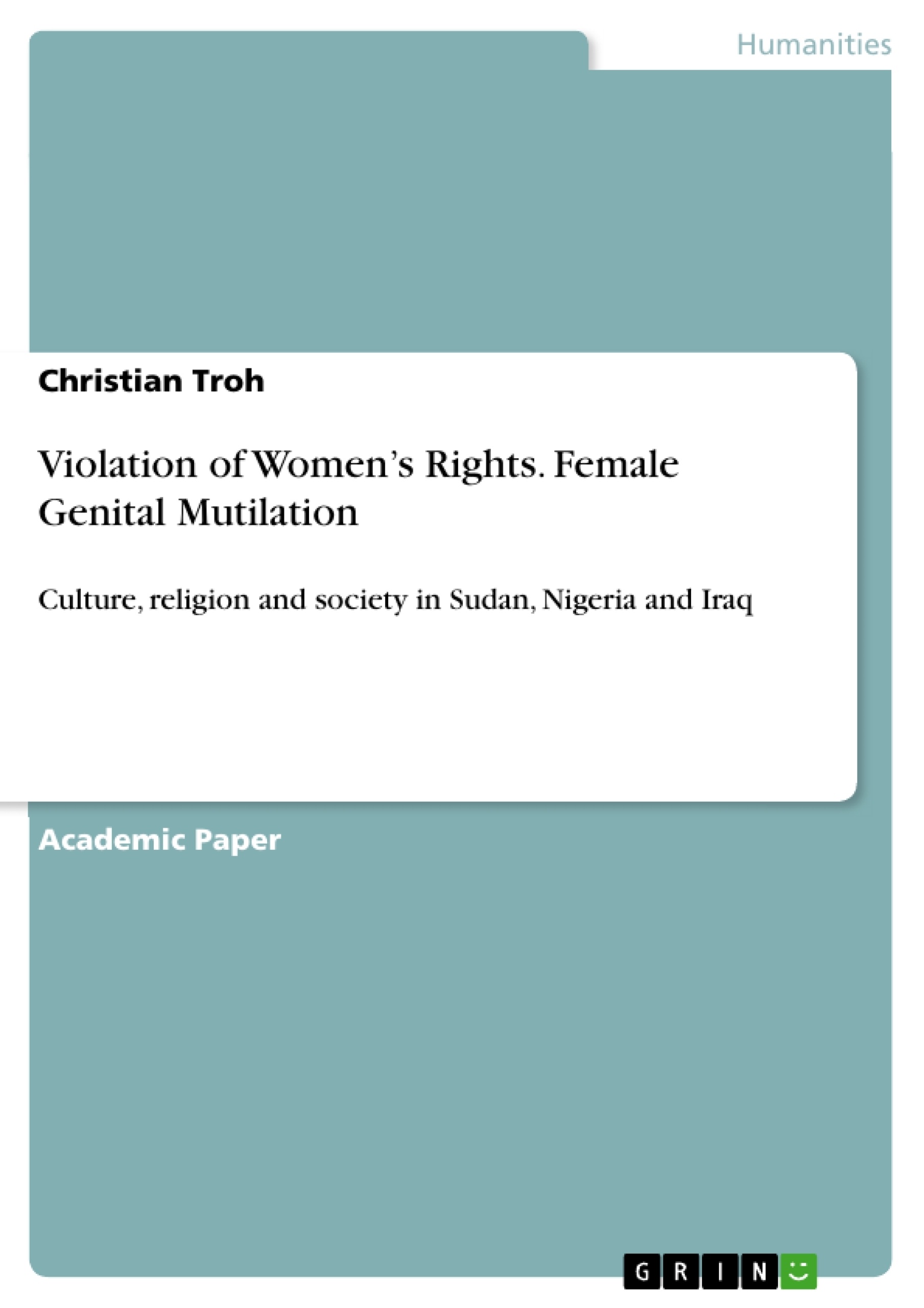This study intends to analyze the causes of the high prevalence of the practice of female genital mutilations (FGM) in Sudan, Nigeria and Iraq. For the attainment of this particular objective, the researcher had used the secondary data collection and the qualitative data analysis method.
The results of the study indicate that the factors of culture, religion and society are the three most important ones which had directly contributed towards the high prevalence of FGM in the different developing nations like Sudan, Nigeria and Iraq among others. More importantly, the results also indicate that the practice of is an attempt on the part of the male dominated society of these nations to not only control the sexuality of the women but of almost all the aspects of their life.
Furthermore, this particular ritual while adversely affecting the wellbeing as well as the health of the women and the girls is a gross violation of the human rights or the basic fundamental rights of the girls and the women. In addition to these, it had been seen that although the different nations of the world like Sudan and Iraq in the recent years had taken the help of various measures, legislations and others but they have failed to help these nations to effectively reduce the high prevalence of FGM.
Inhaltsverzeichnis (Table of Contents)
- Chapter 1: INTRODUCTION
- 1.1 Introduction
- 1.2 Research Objective
- 1.3 Research Questions
- 1.4 Rationale of the Study
- 1.5 Study Outline
- 1.6 Summary
- Chapter 2: LITERATURE REVIEW
- 2.1 Introduction
- 2.2 Female Genital Mutilation (FGM)
- 2.3 Summary
- Chapter 3: THEORETICAL FRAMEWORK
- 3.1 Introduction
- 3.2 Social Dominance Theory
- 3.3 Social Norms Theory
- 3.4 Summary
- Chapter 4: RESEARCH METHODOLOGY
- 4.1 Introduction
- 4.2 Rationale for the Selection of Sudan, Nigeria and Iraq
- 4.3 Qualitative Data Analysis Method
- 4.4 Qualitative Study
- 4.5 Abductive Study
- 4.6 Limitations and Delimitations
- 4.7 Ethical Considerations
- 4.8 Summary
- Chapter 5: PRESENTATION OF RESULTS
- 5.1 Introduction
- 5.2 Presentation of Findings
- 5.3 Summary
- Chapter 6: ANALYSIS
- 6.1 Introduction
- 6.2 Analysis of the Findings
- 6.3 Summary
Zielsetzung und Themenschwerpunkte (Objectives and Key Themes)
This study aims to analyze the causes of the high prevalence of female genital mutilation (FGM) in Sudan, Nigeria, and Iraq. The research utilizes secondary data and qualitative analysis to understand the complex interplay of culture, religion, and society in perpetuating FGM.
- The influence of cultural and religious traditions on the prevalence of FGM.
- The role of social dominance and societal norms in shaping attitudes towards FGM.
- The impact of FGM on women's health, well-being, and human rights.
- The effectiveness of legal frameworks and policies in addressing FGM.
- The potential for reducing the prevalence of FGM through implementation strategies, awareness campaigns, and women's empowerment.
Zusammenfassung der Kapitel (Chapter Summaries)
Chapter 1: Introduction provides a comprehensive overview of female genital mutilation (FGM), outlining its definition, prevalence, harmful health effects, and social, cultural, and religious contexts. The chapter also details the research objectives, questions, rationale, and structure of the study.
Chapter 2: Literature Review examines existing research on FGM, exploring the historical and contemporary practices, social and cultural factors contributing to its prevalence, and the limitations of existing legislations and international efforts to combat FGM.
Chapter 3: Theoretical Framework introduces the theoretical underpinnings of the study, focusing on Social Dominance Theory and Social Norms Theory. These frameworks are used to analyze the interplay of power dynamics, societal norms, and cultural ideologies in perpetuating FGM.
Chapter 4: Research Methodology explains the research design, data collection methods, and data analysis approach. The chapter justifies the selection of Sudan, Nigeria, and Iraq as case studies, emphasizing their distinct cultural and religious contexts.
Chapter 5: Presentation of Results presents the findings obtained from the analysis of secondary data, highlighting the prevalence of FGM in each of the chosen nations, and analyzing the specific cultural, societal, and religious factors contributing to their respective situations.
Chapter 6: Analysis uses the theoretical frameworks discussed in Chapter 3 to critically analyze the findings presented in Chapter 5, providing a deeper understanding of the underlying causes and factors driving the high prevalence of FGM in the chosen nations.
Schlüsselwörter (Keywords)
The primary focus of this study is on female genital mutilation (FGM) and its prevalence in Sudan, Nigeria, and Iraq. The study explores the interplay of social dominance, societal norms, cultural beliefs, religious practices, and human rights violations related to FGM. The study also considers the effectiveness of legal frameworks, implementation strategies, awareness campaigns, and women's empowerment in addressing the issue of FGM.
- Arbeit zitieren
- Christian Troh (Autor:in), 2020, Violation of Women’s Rights. Female Genital Mutilation, München, GRIN Verlag, https://www.grin.com/document/937799



